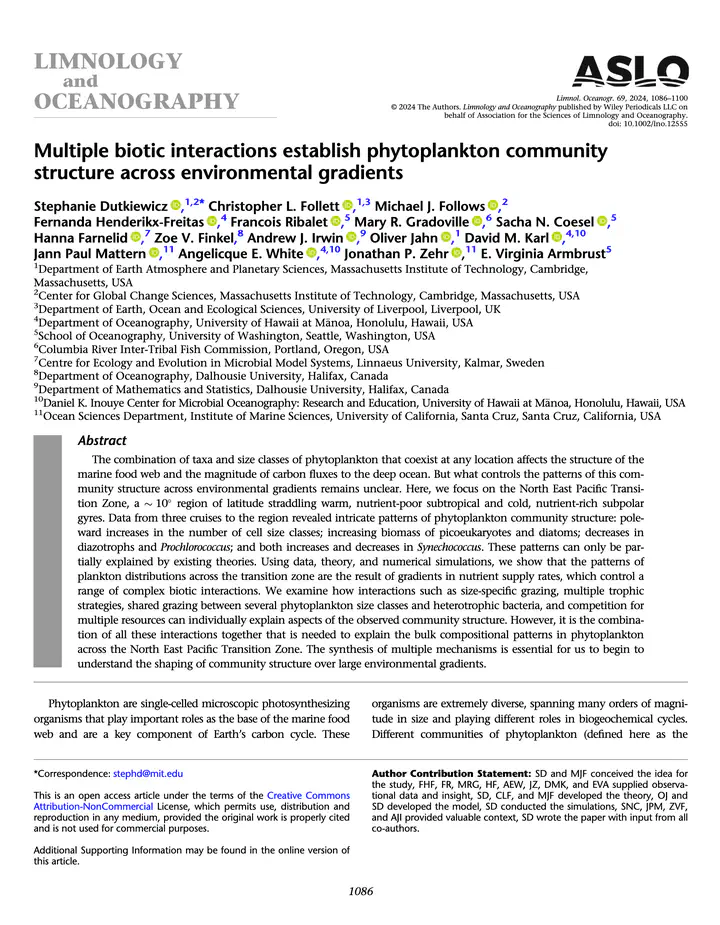Multiple biotic interactions establish phytoplankton community structure across environmental gradients

Abstract
The combination of taxa and size classes of phytoplankton that coexist at any location affects the structure of the marine food web and the magnitude of carbon fluxes to the deep ocean. But what controls the patterns of this community structure across environmental gradients remains unclear. Here, we focus on the North East Pacific Transition Zone, a 10° region of latitude straddling warm, nutrient-poor subtropical and cold, nutrient-rich subpolar gyres. Data from three cruises to the region revealed intricate patterns of phytoplankton community structure: poleward increases in the number of cell size classes; increasing biomass of picoeukaryotes and diatoms; decreases in diazotrophs and Prochlorococcus; and both increases and decreases in Synechococcus. These patterns can only be partially explained by existing theories. Using data, theory, and numerical simulations, we show that the patterns of plankton distributions across the transition zone are the result of gradients in nutrient supply rates, which control a range of complex biotic interactions. We examine how interactions such as size-specific grazing, multiple trophic strategies, shared grazing between several phytoplankton size classes and heterotrophic bacteria, and competition for multiple resources can individually explain aspects of the observed community structure. However, it is the combination of all these interactions together that is needed to explain the bulk compositional patterns in phytoplankton across the North East Pacific Transition Zone. The synthesis of multiple mechanisms is essential for us to begin to understand the shaping of community structure over large environmental gradients.